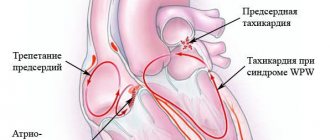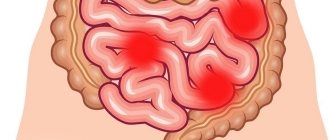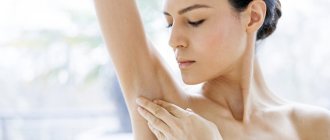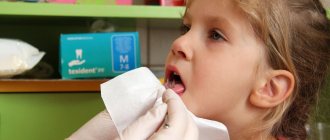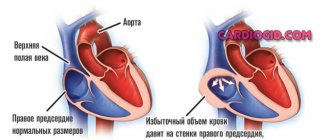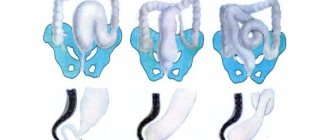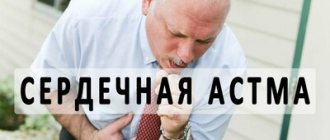Hidradenitis – purulent inflammation of the apocrine sweat glands. The disease develops gradually. For the first few days, the inflamed gland appears as a dense, painful nodule the size of a pea. After 5-7 days it increases in size to 2-3 centimeters and takes on a pear-shaped shape. The abscess looks like a nipple, which is why the disease is popularly called “bitch udder.” The armpits are predominantly affected. The groin area is less commonly affected: the labia majora in women and the scrotum in men, as well as the area around the anus. There are cases of inflammation of the sweat glands around the nipples and in the scalp. Hidradenitis is never observed in children and the elderly. This is due to the fact that the functioning of apocrine sweat glands begins only at puberty and fades away in old age. The majority of cases of hidradenitis (about 85%) occur in women aged 16 to 55 years. Hidradenitis most often occurs during puberty, when hormonal imbalance occurs and during menopause.
Causes of hidradenitis (axillary, inguinal and other localizations)
The main triggering factor for this pathology is personal untidiness. If a person ignores the rules of personal hygiene and does not take a shower or bath in a timely manner, the skin becomes a favorable environment for the rapid growth of microorganisms, including Staphylococcus aureus. In recent years, the main cause of suppuration of the sweat glands in the axillary and groin areas is shaving. Microcuts that occur during hair shaving become entry points for infection.
In addition to uncleanliness, obesity plays an important role, due to which the folds of the skin do not dry out in a timely manner (in a humid environment, microbes multiply tens of times more actively). Diaper rash and scratching also reduce the protective functions of the skin. Finally, diabetes mellitus, which impairs the nutritional function of blood vessels, is also a favorable background for the development of purulent skin infections.
The use of antiperspirants is based on blocking the function of sweat glands. Because of this, sweat does not flush their ducts, Staphylococcus aureus is not washed out and inflammation develops in the sweat gland itself.
Doctors surgeons
Dzhadzhiev Andrey Borisovich Surgeon
Cost of admission 1500
₽
Make an appointment
Marynich Alexander Alexandrovich Vascular surgeon, phlebologist, angiologist
Cost of admission 1500
₽
Make an appointment
Myshlyaev Anton Vsevolodovich Surgeon coloproctologist
Cost of admission 2000
₽
Make an appointment
Where does hidradenitis occur?
Typical localization is the axillary region (the same in both women and men), hidradenitis in the groin (in women more often due to shaving of the intimate area), in the areola of the nipple and under the mammary glands. Hidradenitis genitalis occurs less frequently (in men - the scrotum, in women - the labia majora), as well as on the face (mainly in men).
Such localizations are due to the fact that apocrine sweat glands located in these places are most often susceptible to inflammation. Their peculiarity is the tortuosity of the ducts, which impairs the outflow of sweat and contributes to its inflammation when Staphylococcus aureus penetrates into the gland.
Indications for surgery
Indications for surgical treatment are:
- the formation of a painful inflammatory-purulent infiltrate in the armpit, near the navel, on the labia, in the inguinal fold;
- destruction of the apocrine gland with the formation of an abscess;
- recurrent hidradenitis.
The decision on the possibility of surgical intervention on an outpatient basis is made by the surgeon based on the characteristics of the clinical situation. In some cases, hospitalization may be required.
Stages of the disease hidradenitis
There is no clear stage in the development of the disease. It all starts with the appearance of a painful small nodule under the skin in a typical location. It is not visible at first, but can be felt. After 24-48 hours, it increases significantly in size, the skin over it changes color to red, and then to purple-bluish. The pain becomes very severe and often prevents active movements of the limb.
At this moment, in the thickness of the node there is a process of tissue melting, which is manifested by the appearance of fluctuations (when you feel the node, you feel that its center seems to fall under your finger). The skin over the abscess gradually thins until a small hole appears in it, through which thick pus begins to flow. This usually occurs 7-10 days from the onset of the disease. Often, in the absence of treatment for hidradenitis suppurativa, the process ends in the formation of a fistula, through which serous-purulent contents constantly leak.
Subcutaneous tissue is penetrated by a large number of lymphatic vessels. Through them, the infection can spread to neighboring sweat glands. In this case, the general condition of the patient may also suffer. Symptoms of chronic hidradenitis: body temperature rises, fatigue, weakness appear, sleep and performance are disturbed. Due to massive infection, the subcutaneous tissue swells greatly, foci of infection protrude above the skin, which together forms a picture similar to a “bitch udder” (this has become the popular name for the disease).
Folk remedies
Among the time-tested folk remedies, we can highlight the following recipes:
- Fresh celery leaves are washed in warm water, kneaded and applied to the affected area several times a day;
- Fresh plantain leaves are thoroughly kneaded in your hands until the juice begins to release. After this, they are applied to hidradenitis under the armpit for 15-20 minutes 3-4 times a day. Fresh plantain juice also has good effectiveness;
- Aloe vera leaves are thoroughly washed with warm water, cut lengthwise and applied to the affected area. Aloe leaves themselves are not able to cure the disease, but they have a bactericidal effect and are perfectly combined with other remedies;
- One teaspoon of chamomile, sage, eucalyptus or calendula flowers is poured into a glass of boiling water. Then the solution is filtered and infused for 24 hours. The inflamed area should be washed several times a day.
If a person is diagnosed with hidradenitis, alternative treatment can successfully replace surgical and other traditional methods, but before using decoctions and infusions, consult your doctor or consult an experienced homeopath.
Treatment of hidradenitis
At the stage of infiltration formation, the doctor may try to treat hidradenitis in the groin area, armpits and other locations conservatively. On the first or second day, the use of local remedies is recommended. Antibiotics for hidradenitis are used in the form of ointments, most often tetracycline, erythromycin ointments, and clindamycin lotions are used. Since it is most often impossible to cure acute hidradenitis with conservative methods, it is necessary to resort to surgical intervention.
Adequate outflow is a key point in the treatment of any purulent process. Hidradenitis surgery is the best way to achieve this. According to surgeons, the most appropriate method of pain relief is anesthesia. This avoids systemic effects from anesthetics that would have to be administered in too large quantities.
Progress of the operation:
- The skin above and around the abscess is treated with antiseptics.
- A small incision is made throughout the entire depth of the skin until the abscess cavity is opened.
- The cavity is treated with antiseptics, then drained with gauze turunda soaked in water-soluble antibiotic ointment.
- With multiple lesions of the sweat glands, each abscess is opened immediately. If the lesions are located very close to each other, it is better to remove the entire inflammatory conglomerate within healthy tissue. In this case, the wound is sutured. In all others, it heals on its own.
After the operation, daily dressings are performed, during which the skin around the wound is treated with antiseptics. They also wash the abscess cavity, change the turundas with ointment. At the end of the dressing, bandages with antimicrobial ointment are applied to the wound.
Turunda is removed after pus stops flowing from the wound. After this, it quickly heals on its own. Of course, until complete healing, dressings continue.
General conservative treatment is usually carried out after surgery in cases where hidradenitis recurs (some call this form of the disease chronic, which does not reflect its actual course) or many sweat glands are affected. In this case the following applies:
- courses of antibiotic therapy with cephalosporins and semisynthetic penicillins;
- transfusion of antistaphylococcal plasma;
- UV irradiation of blood;
- laser irradiation of blood;
- vitamin therapy.
For severe pain, non-narcotic analgesics are prescribed; for sleep disturbances, appropriate sleeping pills are prescribed.
Preparation, diagnostics
Upon examination, the surgeon differentiates hidradenitis from other purulent lesions of the skin and soft tissues and determines the stage of the disease. For adequate antibiotic therapy, bacterial culture of purulent discharge is carried out to determine microflora and sensitivity to antibiotics. For prolonged and recurrent pathologies, an immunogram is prescribed. Surgical intervention does not require specific preparation. All you need to do is pass a standard package of tests. Thanks to our own laboratory, the answers will be ready within an hour, after which the surgeon will carry out the treatment.
Reviews
Some reviews from people who have encountered the problem of hidradenitis.
- Review from Oksana. I had hidradenitis in 2009. I underwent 4 operations in a year. Vitamins, autohemotherapy, ointments... it only helped for a while, and then it became inflamed again. I turned to the professor in the purulent-septic department. They performed an operation, but they didn’t just make an incision and that’s it, but radically, it turned out to be a deep excision. then they administered a course of antibiotics into a vein, to which the culture from the wound was sensitive. Only after 12 days of such therapy was I discharged. and all is well. There is, however, a noticeable seam left, but these are minor things. recommended: wipe with alcohol periodically, do not overcool, remove gel or roll-on deodorants, hygiene. and they also advised everyone - maybe it will help someone, especially those who have not yet consulted a surgeon - mix laundry soap (grate), warm baked onion (chop). mix. on the inflamed area, cover with a bandage (change 2 times a day). draws out pus very well.
- Review from Ian. Yeahhh..this is complete crap! I've cut myself 7 times already!!! But for the last 5 times I haven’t gone to the doctor. Don’t think that I’m urging you not to apply, it’s just that the procedure is quite painful! What I do: I burn my buds with boric acid, iodine, smear them with chlorhexidine, apply bandages with baneocin ointment (this is an ointment intended for the treatment of hidradenitis), drink the antibiotic amoxicillin or amoxiclav (amoxiclav costs 500 rubles, and the first up to 100 rubles, the effect almost the same) and brewer's yeast. Burning procedures are painful!!! Very! But it's worth it! Going to the doctor is even more scary! This crap has been tormenting me for 2 years now! I’m so tired that I have no strength! I hate this disease! Surgeons cut with such pleasure! When asked what to do and why this happens, they answer that just cut and don’t catch a cold! But this is not a solution! That’s why we have to take such extreme measures... And now a relapse has occurred:((( I hope that everything will work out!... just like last time.. I wish everyone not to get sick!!!
Physiotherapeutic procedures
Physiotherapeutic procedures for hidradenitis:
- Ultrahigh-frequency therapy (UHF) helps reduce inflammation and eliminate infiltration. The procedure is prescribed if hidradenitis is surrounded by a dense infiltrate and its center is not prone to softening. Physiotherapy in this case is accompanied by the use of antibiotics.
- Sunbathing for 20-30 minutes or heating with a blue lamp for 5 minutes at a distance of 15-20 cm. Dry heat improves blood circulation and promotes the resorption of seals.
- Centimeter wave therapy (CW) therapy improves microcirculation and relieves swelling, reduces signs of inflammation, and increases the protective properties of the skin.
- X-ray therapy is used to destroy the inflamed sweat gland in recurrent hidradenitis.
- Local ultraviolet irradiation (UVR) causes the death of bacteria and increases local immunity and skin resistance to infections.
Once a cavity filled with pus has formed inside the source of inflammation, maturing procedures are contraindicated.
Therapy for inflammation of the sweat glands
The disease is dangerous due to serious purulent complications, including the development of sepsis, so treatment of the symptoms of hidradenitis and elimination of the pathogen must be timely.
At the initial stages of the pathology, conservative therapy is successfully used, which consists of enhanced antiseptic treatment of the damaged area of the skin, exposure to dry heat, and ultraviolet light. To prevent further development of the disease, local antibacterial ointments and gels, application of bandages with an anti-inflammatory effect, as well as systemic antibacterial drugs are prescribed.
Hygiene rules
Maintaining good hygiene when dealing with hidradenitis helps prevent the infection from spreading to other areas of the body. In addition, microorganisms that get from the wound onto the hands or into the environment can cause severe poisoning or purulent inflammation in other family members.
- You can't take a bath. This can promote the spread of pus throughout the body. Instead, shower once a day, after covering the affected area with adhesive tape to prevent water from getting on it.
- The patient must have his own towel, underwear and bed linen. It must be washed daily at a temperature of at least 90 degrees and ironed with a hot iron.
- For hygiene of inflamed areas, you can use Citeal instead of liquid soap.
- When washing, use germicidal soap or gel with a high lactic acid content. Such products will help reduce the number of pathogenic microbes on the skin and normalize its acidity.
- Until complete recovery, avoid shaving and hair removal to avoid damaging the skin.
- Wear loose clothing made from natural materials. They help avoid overheating and excessive sweating, which increase the proliferation of bacteria and increase the source of inflammation.
- After a shower, wash the affected areas with a slightly pink solution of potassium permanganate.
To dry skin folds with hidradenitis, it is recommended to use powders with zinc oxide and talc.
